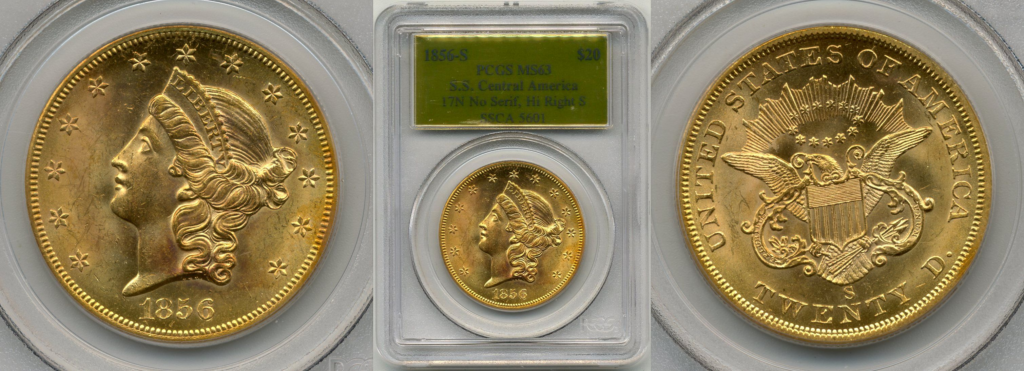
If you’re a history buff, you’ve maybe heard of an event called the Panic of 1857.
Firstly, it had nothing to do with a disease or a shortage of toilet paper. It was an episode in history when the world economy took a dark turn for the worse. Not only did it affect those living in and working in eastern cities, but the simple farmer on the Minnesota frontier. Suddenly, his cash crops became worthless, and his bank notes were only as valuable as the paper they were printed on. In addition, the enterprising settlers that depended on the growth of new settlements would see the surge of immigration to Minnesota slow to a lowly trickle.
A great many factors went into this global depression, but in America it was due in large part to the sinking of a ship off the East Coast — a spark that ignited a massive nest of tinder. Why? A major part of the California gold rush gold was on the vessel.
It was the fall of 1857, and the S.S. Central America had left the Colon Port in Panama and was sailing to New York. Aboard the ship were 477 passengers and 101 crew members. The the ship left Panama on Sept. 3, stopped in Havana, Cuba, a few days, and by Sept. 9 was off the coast of the Carolinas.
It was hurricane season, and a Category 2 storm was making its way down the coast. By Sept. 11, the force of wind from the storm had accelerated to more than 100 mph. The Central America tried pushing on out of the storm, yet her sails were shredded by the wind. It wasn’t long before she began taking on water.
A leak in the ship’s side was worsening, and salt water began filling the bilge. The Central America was fitted with a boiler, however, and the mechanical bilge pump began dumping the water back into the sea. The pump wouldn’t last long, though. Early in the day, the pump was laboring to keep up. By noon, the boiler had given out and the ship began filling with water.
The crew drew the U.S. flag up the pole, flying it upside down as a distress signal, yet no one came to their aid. A bucket brigade was formed out of the crew and passengers, but it was a losing battle.
Understand all this gold and silver was lost at sea over 200 Miles off the Carolina Coast in 8000 Feet of water. No Diver. But all recovered with a robot named ”Nemo” it was the only way to recovery all these fabulous coins, bars, gold dust and artifacts. The photos you see are from the debris field as it sat since 1857. 8000 feet , No shifting sands which made for zero change in the quality of the gold coins. It was literally a “Time Capsule” from 1857! Like out of a corner stone from a century old building.
—
Trey Cox
CEO & Chief Numismatist American Rare Coin
Beaumont, Tx
866.789.2646











